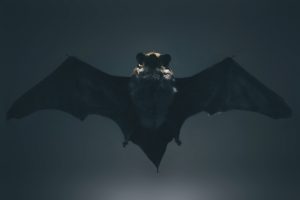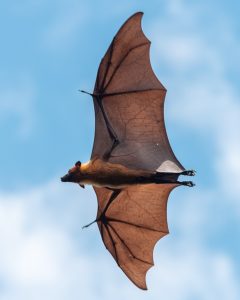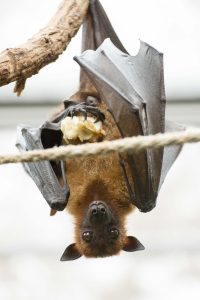
Bats: Shrouded in Mystery and Fear
As human beings, we have had a close relationship with the natural world since the beginning of our species’ journey on this planet. Throughout the centuries, as cultures around the world developed, the animals and plants in our environments were often the focus of myths, legends, and symbolism. Among the animal characters featured in humanity’s many stories are bats. As humans are not particularly well adapted to nightlife, darkness is often associated with mystery and fear in our mythical and spiritual worlds. Bats, as a result of their nocturnal nature, are often associated with that same mystery and fright, sharing space in our minds with witches, vampires, monsters, and the bigger mystery of death. In the words of author Dan Brown, “we all fear what we do not understand”- in this special two-part blog, let’s explore the remarkable world of bats, and why they really aren’t so spooky after all.
Batty Basics
Bats are mammals in the order Chiroptera, meaning “hand wing”. They are the only mammal capable of true flight, and in fact, the Mexican or Brazilian free-tailed bat (Tadarida brasiliensis) is the fastest straight flying animal on Earth, flying at speeds of around 100 mph. Like other mammals, bats have fur and are warm-blooded, with female bats giving birth to live young that they nurse.
There are over 1,300 species of bats around the world, with approximately 20% of all mammals being bats! These unique animals come in a variety of shapes and sizes, with different abilities and adaptations to survive in their respective habitats. These sizes range from the giant golden-crowned flying fox (Acerodon jubatus), which can have a wingspan of over 5ft., to the bumblebee bat (Craseonycteris thonglongyai), with a body about an inch long!

“Hand Wing”
Remember that fancy word “Chiroptera”? Take a look at the bat in this picture- do you recognize any similarities between your body structure and this bat’s? If the arm and finger bones of this bat caught your eye, you may be onto something! A bat’s arm and finger bones closely resemble our own, save for a few interesting characteristics. They have four long, flexible finger bones that give their membranous, skin-like wings a helpful “wing up”. Bats can move these fingers to change the shape of their wings while flying, enabling them to fly skillfully through tight spaces in the dark, and hover in midair. Bats even have thumbs like us too! These thumbs are equipped with a claw that helps them to climb, fight, and hold onto surfaces like the bark of a tree!

Frugivory or Hematophagy?
Different bat species’ diets range from insects to fruit, and yes- blood. Frugivorous or fruit-eating bats such as the famed and conspicuous flying foxes rely on their sense of smell to find and feed on delicious, sweet fruits, nectar, and flowers, and in the process, help pollinate valuable plant species around the world. Hematophagous, or blood-eating “vampire” bats prefer to feed on large mammals such as livestock, and some are even adapted to feed from birds! They have a special ability to detect infrared radiation with sensors on their noses to find their next “warm meal”. There are only three species of hematophagous bats in the world, all of which are found from Mexico to South America.
Batty for Bats?
Head on over to part two of this two-part blog series to learn more bat-tastic facts, and how you can help protect these unique, beneficial creatures of the night. If you would like to continue learning, visit our wildlife webpage for more information and a free Wild Sarasota webinar all about bats!
 1
1
